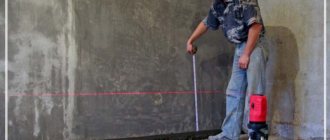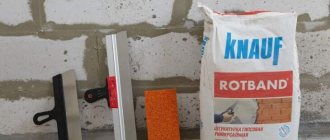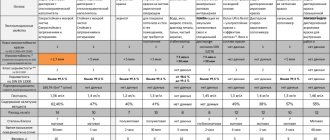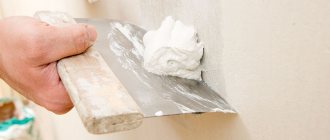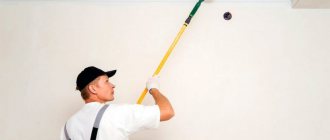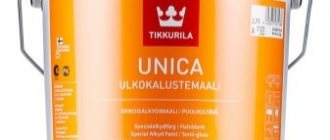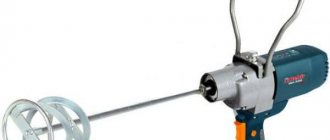Features of water-dispersion paint
Water-dispersion paint contains polymers - substances consisting of repeating chains of molecules. The coating is a suspension in water of solid particles invisible to the eye - dispersions. The paint comes as a thick white paste. Before use, you must add water and the pigment of the desired color.
When paint is applied to a flat surface, tiny particles “get stuck” on it, and the water evaporates. This results in a smooth, damage-resistant coating.
Water-based
A classic solution for finishing the ceiling, which at one time replaced traditional whitewash. The long-term popularity of the compositions is explained by their low cost and environmental friendliness. Since this type of paint is made based on water, it does not have a strong odor. Accidental drops on surfaces adjacent to the ceiling can be easily removed with a damp sponge. It can be more difficult in this regard with washing paints, so it is advisable to remove them before they dry.
Water-based paint adheres well to putty and plaster (read: “Which water-based paint for the ceiling is better - choice and rules for painting”). The material goes on sale in a standard white color: to obtain any other shade, just add the appropriate dye. In this case, you must act very carefully, observing the dosage indicated on the package. For many, this material will be the answer to what is the best white paint for the ceiling.
Types of water-dispersion paints
Water-based paints are divided into three categories, which differ in composition and binding component.
Polyvinyl acetate group
PVA-based solutions are intended for interior work. They can cover ceilings and walls, radiators and plasterboard ceilings. Their only drawback is poor moisture resistance.
The paints are not suitable for use in a bathroom or bathhouse; it is also undesirable to use them in the kitchen. To work with the external walls of the house, you should also choose other varieties of this paint.
Latex group
The latex contained in the paint allows it to withstand “wet” loads. The coating is intended for wet areas.
- This is especially convenient because if the surfaces become dirty, they can be easily washed with both water and household chemicals - the paint will not be damaged.
- But this group also has its weaknesses; the latex coating fades in the sun.
This drawback does not allow the use of a water-repellent solution for building facades or fences.
Acrylic group
Acrylic coating is suitable for both exterior and interior decoration. It fits well on the surface and sticks “tenaciously” to it. This paint is not afraid of rain, hail or wind.
It is resistant to damage and does not crack due to temperature changes. The coating “breathes”, so the wooden beams will not become moldy under it. The consumption of acrylic paints is slightly less than others, although the price is slightly higher.
Classification
All VD finishing materials can be divided into three types: PVA, acrylic and latex-based paints. The differences between them are the main components or binders. Dyes also differ in technical characteristics.
PVA
This is a water-dispersible polyvinyl acetate paint. Polyvinyl acetate is used as the main active element here. These dyes are characterized by low resistance to moisture, so they are not recommended for use in rooms with high humidity, and are not suitable for finishing facades. These materials do not contain substances harmful to humans and can be used in offices and residential premises.
The material is well suited for interior work. For example, such paints can effectively paint wallpaper, heating radiators, wood and other interior surfaces.
Latex based paints
Water-dispersed latex paint is produced on a latex base. This product has certain advantages that other materials do not have:
- Latex dye allows you to obtain a durable and reliable coating that is resistant to humidity and external aggressive influences. Latex compounds can be used in damp areas.
- The treated surface is highly resistant to various types of household chemicals and disinfection products.
One minor disadvantage of latex dyes is color fading in direct sunlight.
Acrylic
Another type is dispersion acrylic paints. These are universal finishing materials suitable for any type of work. A coating made with these dyes can remain attractive for a long time, withstand high humidity conditions and exposure to moisture, allow air to pass through, and prevent the formation of fungus and mold. The coating made with water-based acrylic paints will not crack and can withstand even significant mechanical damage.
Unlike other types of dyes, the consumption of acrylic paints is much lower. This can be explained by elasticity and a high level of adhesion with any coating.
Main characteristics of water-dispersion paints
The properties of water-dispersed paints are determined by the following parameters:
- White brightness. Water-based paints are usually white due to the addition of titanium dioxide. The more piercing the whiteness of the solution, the better the paint. This property allows you to achieve a more saturated color when adding pigment. If the water-dispersion paint already has a tint, it is better to discard it: the manufacturer is hiding a product of average quality under the color.
- Covering power. This parameter determines the ability of the paint to cover with its color the shade of the surface on which it is applied. Covering power depends on the density of the paint. The optimal volume-to-weight ratio is when 1 liter of solution weighs 1.5 kg. Thinner paint will lay down in too thin a layer, and thicker paint will increase the consumption of the solution.
- Moisture resistance. Not all groups of paints are able to withstand contact with water; for example, the PVA group does not withstand getting wet. For this reason, it is not suitable for exterior home decoration or bathroom painting. The remaining groups even tolerate the use of detergents.
- Resistant to sunlight. This parameter is important for paint when carrying out external work. If you use latex paint, which has excellent moisture resistance, you will be disappointed when painting a fence or gazebo. The coating will quickly fade in the sun, and the surface will lose its attractiveness. For outdoor work, it is better to take acrylic paints.
- Resistance to mechanical damage. Water-dispersion paints create a hard film on the surface, so it is better to choose based on other properties. Latex paint will perform better in a damp basement, while acrylic paint will perform better outdoors.
All these characteristics allow you to choose the right paint for certain jobs.
Main operating parameters
The main operational parameters include color, appearance of the surface after application, the proportion of resin content, and additional components.
Main paint properties and technical characteristics:
- after application and hardening, a homogeneous film with a smooth surface is formed;
- the selected shade will be similar to the sample in the catalog;
- slightly alkaline composition;
- titanium dioxide is added to the composition;
- drying speed in warm weather – 60 minutes;
- After complete drying, the surface of the walls and ceilings can be washed.
The properties of the paint include its resistance to frost. It refers to the number of freezing cycles that the coating can withstand under standard conditions. Additional parameters are drying speed, resistance to light and mechanical damage.
Benefits of paint
The water-dispersion solution has a number of positive qualities. First of all, it is an environmentally friendly coating because it is water-soluble. It does not have a strong odor and is breathable. Thanks to this latter quality, the material under the coating does not rot or mold.
Several more characteristics can be highlighted:
- Water-based paints do not burn, so they are considered fireproof.
- They are easy to apply; even a beginner can handle this material.
- They last up to 15 years, which means that the surface does not have to be repainted annually.
- The solution dries quickly. After applying the first layer, only 2-3 hours should pass.
- Brushes and rollers can be wiped off with water and detergent after use.
- Due to its moisture resistance, the solution is excellent for treating wooden surfaces outdoors.
- The coating is resistant to damage.
- The paint is affordable.
With so many positive factors, there are also application features that should be adhered to.
Application methods
When performing repairs or construction work, it is important to follow the technological process and the method of applying the layer.
Craftsmen can use the following tools depending on the chosen method:
- brush;
- simple or textured roller;
- applying paint using a spray gun with a compressor connected.
Manufacturers use water as a base, so it is important to follow the technological process.
Rules for applying material to the surface:
- The optimal air temperature for work is at least +5°C. Sometimes manufacturers provide additional instructions on the packaging.
- Do not apply paint to a wet or damp surface. The base must be sanded, without gloss or residues of other coloring materials.
- It is recommended to use painting tools that are resistant to corrosion. After work, they are thoroughly washed and dried.
- During application, try not to spill the paint. Once dry, it is difficult to remove from the surface.
- Painted products can be used after 2-3 days, when the material is completely dry. The final drying time is at least 5 days.
Manufacturers allow craftsmen to dilute the paint with water. The amount of liquid should not exceed 5% of the total weight.
Basic tool for applying acrylic paint.
Features of application
When using paint you need to know some nuances. If it is raining or frosty outside, then painting work cannot be carried out, the solution will not dry. In hot weather, the paint will dry so quickly that it can degrade the quality of the coating.
Before using paint, you need to level the surface to perfect smoothness. A thin layer of coating will highlight all the protrusions and “notches” on the wall.
Advantages of acrylic polymer dispersions
The choice of this modern material is a priority for creating coatings that have not only decorative, but also excellent functional qualities. The good reputation of this product is based on its following qualities:
- has excellent adhesion and is used for finishing brick, concrete, plastered and wooden surfaces;
- It is waterproof, allowing you to wash any painted surface;
- lasts a very long time - if the application technology is followed, the coating can last on average 15 years;
- does not fade with prolonged exposure to intense ultraviolet irradiation;
- does not contain toxic substances;
- does not smell of anything and does not cause allergic reactions;
- has high elasticity and resistance to mechanical stress;
- Well masks minor defects of any surface;
- creates a film with a “breathing” effect, which makes it possible to prevent mold from spreading in damp rooms;
- the composition does not contain flammable components;
- The painting process requires minimal preparation and is usually straightforward.
The scope of application of this paint is not limited to construction and repair. In light industry it is used for dyeing textile materials. Artists design objects of decorative and applied art and create paintings with its help.
Procedure for working with water-dispersed paints
To work with the coating, you can use a brush or roller. It is better to purchase a roller with a long handle in order to reach all surface levels. The wall in the room must be leveled and primed so that the layers lay correctly.
Paint needed:
- Dilute;
- Add pigment to it;
- Stir thoroughly.
Work should start from the window. The layer is placed both along and across the surface to fill the space evenly. The coating can consist of 1-3 layers. The interval between paintings is 3-4 hours. Approximately 140-180 g of paint is required for 1 m2 of flat surface.
Criterias of choice
Having become familiar with the main types of materials for painting the ceiling, it is important to identify for yourself the main criteria for choosing paint for the ceiling in an apartment.
When considering a particular paint option, you need to pay attention to the following:
- Coverage level. We are talking about exactly how much material is spent on the design of 1 m2 of base.
- The presence of a masking effect. This property is useful for decorating not very smooth surfaces.
- Bucket volume. It happens that similar-looking containers differ by 100 ml or more.
- Performance characteristics of the finished finish. This includes cleaning recommendations and cautions regarding sunlight, moisture, etc.
- What kind of paint is needed for the ceiling - matte or glossy?
- Price.
Materials for painting ceilings are presented in the form of aqueous suspensions, which contain polymers and dyes. The main substance is usually indicated in the name of the material, although, in fact, all such solutions are water-dispersed.
The difference between water-based and water-based paints
Both types of coatings are water-based paints, but they have significant differences. Dispersion paints contain hard particles - dispersions; the emulsion solution is filled with liquid inclusions.
There are also differences:
- Dispersion paint forms a stable coating that cannot be washed off with water; emulsion paint does not withstand moisture.
- A thin layer of dispersion paint does not crack due to bad weather and lasts a long time; emulsion paint is less resistant to mechanical damage.
- Emulsion paint is varied in its shades; disperse paint is supplied to the store only in white. The shade is given by additionally added pigment.
- Dispersion paints must be diluted with water; emulsion paints require solvents.
In stores, the cost of water-based coatings is higher than water-dispersion coatings.
Water-dispersion paints are perfect for different types of surfaces, outdoors and indoors. Forming a stable coating, they stand out in rich color and are safe to breathe.
How to choose the right one
First of all, if you need to buy water-dispersion paint for finishing work, it is important to determine the necessary performance characteristics that are important for facade finishing. In any case, it is necessary that the material has the highest possible quality indicators, which will create not only a decorative layer, but also provide protection to the structure.
Regarding the purchase of paint, the following factors must be taken into account:
- Country of Origin;
- trademark;
- the area intended for the use of the material;
- availability of a quality certificate;
- best before date;
- storage conditions;
- packaging (usually 15 kg).
IMPORTANT!
It is not recommended to purchase materials that do not come with quality certificates, since there is no guarantee that the brand being purchased is capable of providing the home with the list of stated requirements.
Photos of water-dispersion paints
Acrylic VDK for external use
If you plan to paint outdoors using VD-AK, wait for favorable weather conditions:
- High air humidity with rain will not allow the freshly applied coating to quickly dry and harden.
- Strong winds can cause a lot of trouble. Unsightly stains, stains and small debris may appear on a freshly painted surface.
- Uneven paint adhesion can be caused by direct sunlight. On a hot, cloudless day, it is necessary to create artificial shading for the surface being treated to avoid application defects and quickly hardened drips.
When starting work, follow this sequence:
- The initial mandatory action is to remove all kinds of contaminants from the surface or degrease any material before processing the VDC.
- Smooth out all unevenness and defects with putty, plaster or cement mortar.
- If mold is found on the surface to be prepared, first remove it with a rag and a scraper, then saturate the area well with a fungicide and leave until completely disinfected and dry for a day.
- Pre-prime walls that are being painted for the first time using a roller or brush. Then wait for the primer to dry. This usually takes about 12 hours.
- Mix the water-dispersion solution thoroughly before use, add color pigment if necessary and start working.
The paint is non-toxic, but once dry it is difficult to wash off, so be sure to wear safety glasses and gloves, and apply a layer of protective cream to your face.
Professional secrets for interior work
Interior painting of residential premises has its own nuances. When working with VDK, air humidity increases significantly. To create a safe and comfortable environment, it is advisable to install forced ventilation. At the same time, the paint and varnish material will dry faster and better .
To make the coating look perfect, use the following recommendations:
- You need to start applying paint parallel to the frame structure, from the side of the window.
- The first time it is better to paint with a brush, a composition diluted in a ratio of 0.5 liters of water to 5 liters of paint. Subsequent layers are applied with a roller to achieve a leveled surface.
- Each coat of paint is applied at intervals of 3 hours.
- The sprayer will significantly speed up painting the walls. It can be used at a distance of a meter from the windows.
- If the surface is highly absorbent, it may be necessary to apply three layers to obtain a high-quality coating.
- Before painting the interior walls, it is better to dismantle the baseboards or cover them with masking tape.
- If, according to the design plan, you need to paint one wall in two different colors, which will visually divide the room into zones, for example, for working at the computer and relaxing in front of the TV, use the same masking tape.
- Always consider the natural light factor. The final coat of paint on the ceiling will look better if applied perpendicular to the wall with the light source.
Water-dispersed paint and textured rollers with stencils will help create stylish and bright interior elements.
What should you ask from a master?
As a rule, an employer expects almost a miracle from a professional painter. Like, that’s why he’s a professional. And he examines the painted surface almost under a magnifying glass. However, the regulatory requirements (which customers must follow) for craftsmen are not so strict.
Sometimes the problem is not with the artist, but with the paint.
For example, SNiP 3.04.01-87 states that defects should be looked for at a distance of 3! meters. And if from this distance you cannot see: “stripes, stains, smudges, splashes, abrasion... translucency, peeling, wrinkles, visible grains, film clots, marks from brushes, rollers or tampons” - there is nothing to blame the master for.
Another important note in SNiP: “In places where surfaces painted in different colors meet (where paint of one color borders on another (author’s note), the curvature of the lines... should not exceed 5 mm for simple painting, 2 mm for improved painting, high-quality - 1 mm." In short, if the master is not cheap, he can be forgiven for a deviation of only 1 mm.
Interesting on the topic:
- Tools for plastering work in an apartment
- List of tools for the avid painter
- How to install beacons and use them in plastering work?
- Types and properties of putty mixtures
- How to prepare different surfaces for painting?
- Painting surfaces with oil paints and enamels
Purchase and storage of coverage
On the Internet, on various industrial and construction portals, you can find a lot of proposals for the implementation of acrylic VDK.
Serious companies always guarantee the quality of any paint coating, provide it with reliable storage conditions, and they usually do not have any difficulties with delivery of the goods.
The presence of water in paint components creates some restrictions on storage and transportation methods.
Containers for these purposes must be made of corrosion-resistant materials - stainless or polymer.
VDK cannot be stored at sub-zero temperatures . The permissible freezing limit is no more than 5 times. Transportation is allowed for one month at a temperature of −20 °C, if this can be controlled. This is the only minor drawback for the consumer.
New technologies for the production of acrylic water dispersions make it possible to use their unique properties to coat almost any materials and structures, increasing their resistance to fire and corrosion.
They are not inferior in quality to pentaphthalic paints for painting wooden surfaces, but they dry very quickly and do not have toxic fumes with an unpleasant odor.
This encourages buyers to choose VD-AK and forget about the usual enamels and varnishes collecting dust on the shelves.
What is dispersion paint, what type of finishing work is it suitable for, and what are the advantages or disadvantages of this material - all this is useful to know when choosing paint and varnish materials for repairs.
Working with VDK
The use of interior water-dispersion paints is available even to a person without experience in finishing work.
Tools
It is convenient to paint large surfaces with VD paint using a spray gun, if you have one, but you can get by with the simplest and most affordable tools:
- paint roller,
- telescopic handle to the roller for those who prefer to work while standing on the floor;
- a tray (cuvette) with a ribbed platform for removing excess material from the roller;
- wide brush for painting corners and joints;
- a narrow brush for painting hard-to-reach places and areas that require special care (around sockets and switches, for example);
- masking tape is useful for protecting baseboards if they have not been previously dismantled, and borders with other areas that cannot be painted.
Interesting: masking tape can be used when painting one wall in different colors. This design technique is called zoning and allows you to conditionally divide the space in a room into several parts, different in functional purpose: a work area (computer desk and office chair), a rest area (sofa and TV), and so on.
Preparing for painting
Water-dispersion paint forms a thin film on the surface, which, although it covers small cracks, is still unable to smooth out all the flaws and irregularities. In order for the walls or ceiling to look perfect after finishing, they will have to be properly prepared.
- When the surface is in good condition, that is, the old coating lies flat or is completely absent, you just need to wash it with soap and dry it. If there is a problem in the form of peeling old paint, chips, deep cracks, more serious intervention will be required: the unusable layer of material is cleaned off with a spatula or scraper; in particularly difficult cases, use a drill with a special attachment.
- The cleaned surface is treated with a vacuum cleaner and leveled with starting putty, and after it dries, with finishing putty. All roughness is rubbed down with sandpaper. Clean from dust again.
- A smooth, clean and dry wall must be primed to achieve maximum strong adhesion of the paint to the surface. It’s good if the primer contains antiseptics, this guarantees protection against putrefactive bacteria and fungi.
Coloring
First of all, the coloring composition needs to be mixed. A construction mixer or drill with an appropriate attachment is suitable for this.
Paint is applied to the corners with a wide brush, and border areas and difficult areas are painted with a narrow brush. Now you can pour the solution into the cuvette and start working with the roller properly, soaking it and freeing it of excess liquid to avoid drips.
Walls are always painted from above, the roller is rolled in vertical and horizontal directions alternately, gradually moving to the very bottom of the wall.
To paint the ceiling, it is important to know: no matter how many layers are placed on the surface, the last of them must be applied perpendicular to the wall with the window, that is, to the natural light source. If you take this nuance into account, the ceiling will look most advantageous; dark stripes and spots will not appear on it.
Main differences or what is the difference
Having considered all the characteristics, we can conclude that water-based paints differ from water-dispersion paints. It is worth noting that water is only 1 part by which these compositions can be equated, otherwise there are only differences:
- One of the main things to highlight is the excellent moisture resistance of water-dispersed ones, but water-emulsion ones are very easy to wash off with water. It is better not to use it for painting damp rooms.
- Water-based dyes have a good hiding power.
- Water-based dyes are significantly cheaper than the comparable competitor.
- To dilute water-based paint, use plain water; for water-based paint, it is better to use a solvent, such as white spirit.
- Water-dispersed is often produced in white and use color to add color.
Our expert advises reading this:
- Choosing a yacht varnish for woodworking Initially intended as an external and internal impregnation of wooden ship hulls, yacht varnish has now become actively used in…
- How to get red by mixing paints Everyone knows that by combining 3 primary colors (red, yellow and blue), you can achieve any other color. This theory is still in...
- Polyvinyl acetate water-based paints - characteristics and composition Preparing for alterations in the apartment, we come to the problem of selecting paint, thanks to which our design thoughts will come to life. She should fit...
